The 6 Types Of Syllables & FREE Anchor Charts!
This post may contain affiliate links, and I will earn a commission if you purchase through these links. Please read the disclosure policy for more details.
Did you know there is a whole set of syllable rules which tell you exactly how to spell and where to split words so that you can tell what sound a vowel will make?
To be able to get to that point, you first need to learn the 6 types of syllables.
I am sure most of you reading this know what a syllable is since many of my readers are educators. But for those who don’t, I will explain.
Syllables Anchor Chart
Grab my free 6 Syllable Types anchor charts to use with your students by signing up for my email list above.
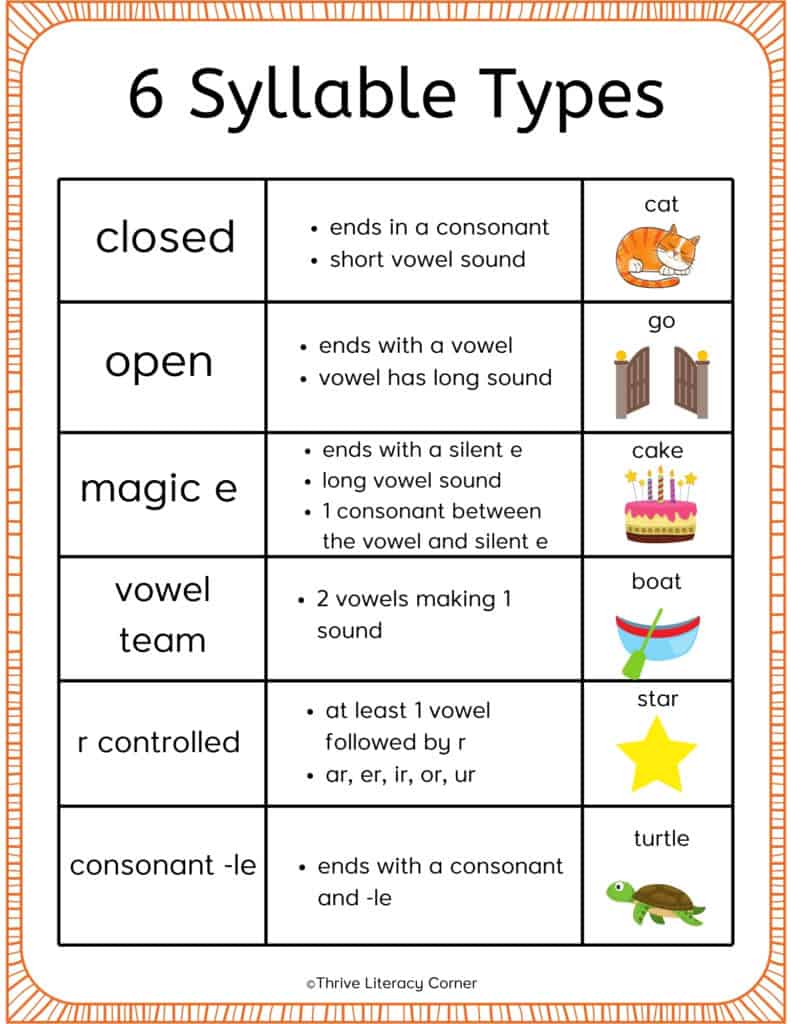
What is a syllable?
A syllable is an uninterrupted segment of sound which is formed by the opening and closing the mouth to form vowels. It consists of one or more letters with one vowel sound. This means that we hear one vowel sound in every syllable.
So for example, the words cat and boat have 1 syllable because we hear one vowel sound in each word. The words cupcake and dinner have 2 syllables because we hear 2 vowel sounds in these words.
As you can see, it’s not as simple as identifying the vowels in a word and using that number, since sometimes 2 vowels make 1 sound, as in the word boat.
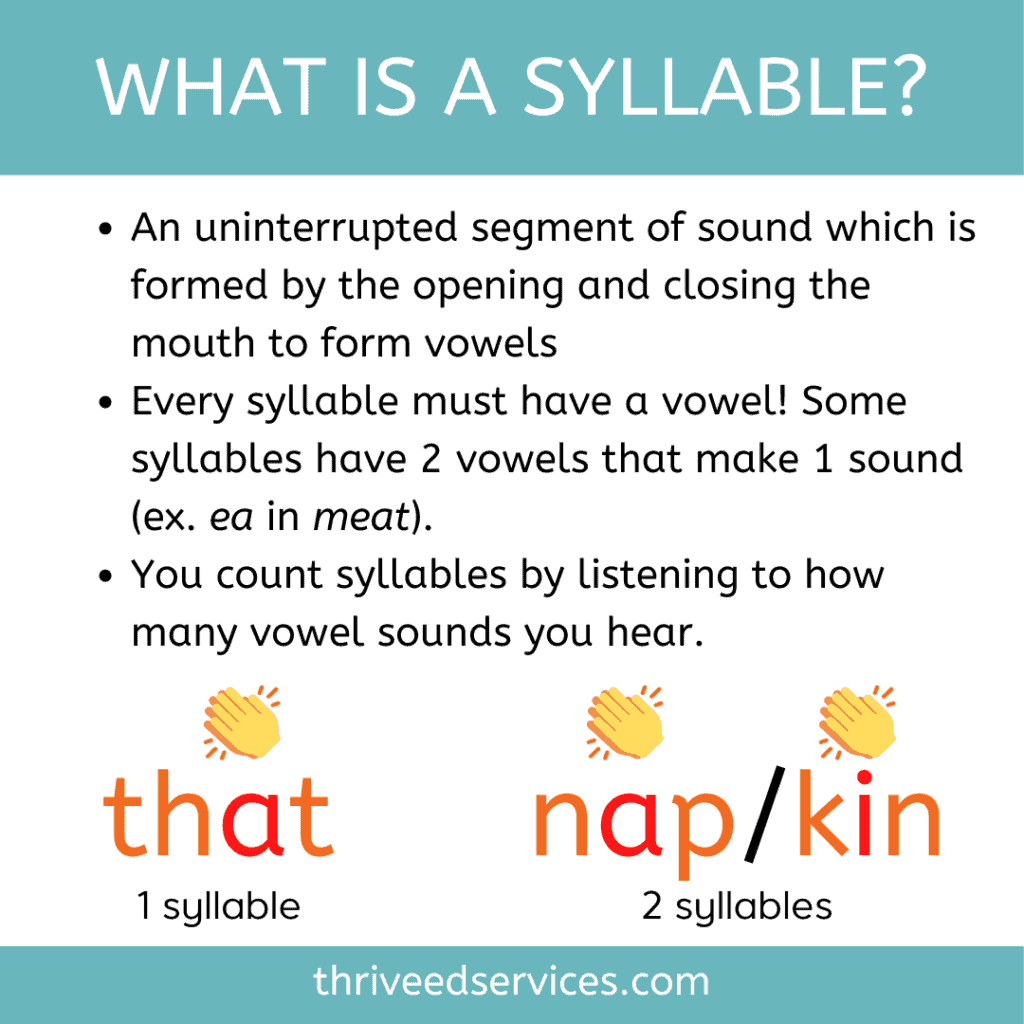
How To Count Syllables
To count syllables, you may have done that thing where you put your hand under your chin to count how many times your mouth opens when you say a word. This works because your mouth must open wide when making vowel sounds. But I find it’s more accurate to hum the word and count the hums.
For example, with the word purple, you would hum hum-hum and that clearly sounds like 2 parts of a word. Using the hand under the chin method with the word purple might produce an inaccurate result because our mouths don’t open very wide for the vowel sound in -ple.
I also give my students a mirror so they can watch their mouth formation when vocalizing vowel sounds compared to consonants. They can easily see the visual of their mouth opening to make vowel sounds, which is the part we count for syllables.
Why are syllables important?
So now that we know what a syllable is and how to count them, you may be wondering why anyone would need to know this.
When I went to elementary school in the ’90s, syllables were not taught. I never learned any of the spelling rules or phonics but I had great memory and somehow I internalized spelling rules through exposure.
But if you or your students are like most people, they are perplexed by English spelling rules that “don’t make sense!” But that simply is not the case. There are many rules that govern how we read and spell and not as many exceptions as most people think.
Syllable rules are very important to know for spelling and decoding, and critical to teach to students who struggle in either reading or spelling.
Knowing the different syllable patterns and how to split words into syllables helps students decode and spell words correctly. They can predict what sound a vowel will make and break up longer words into smaller parts for easier reading.
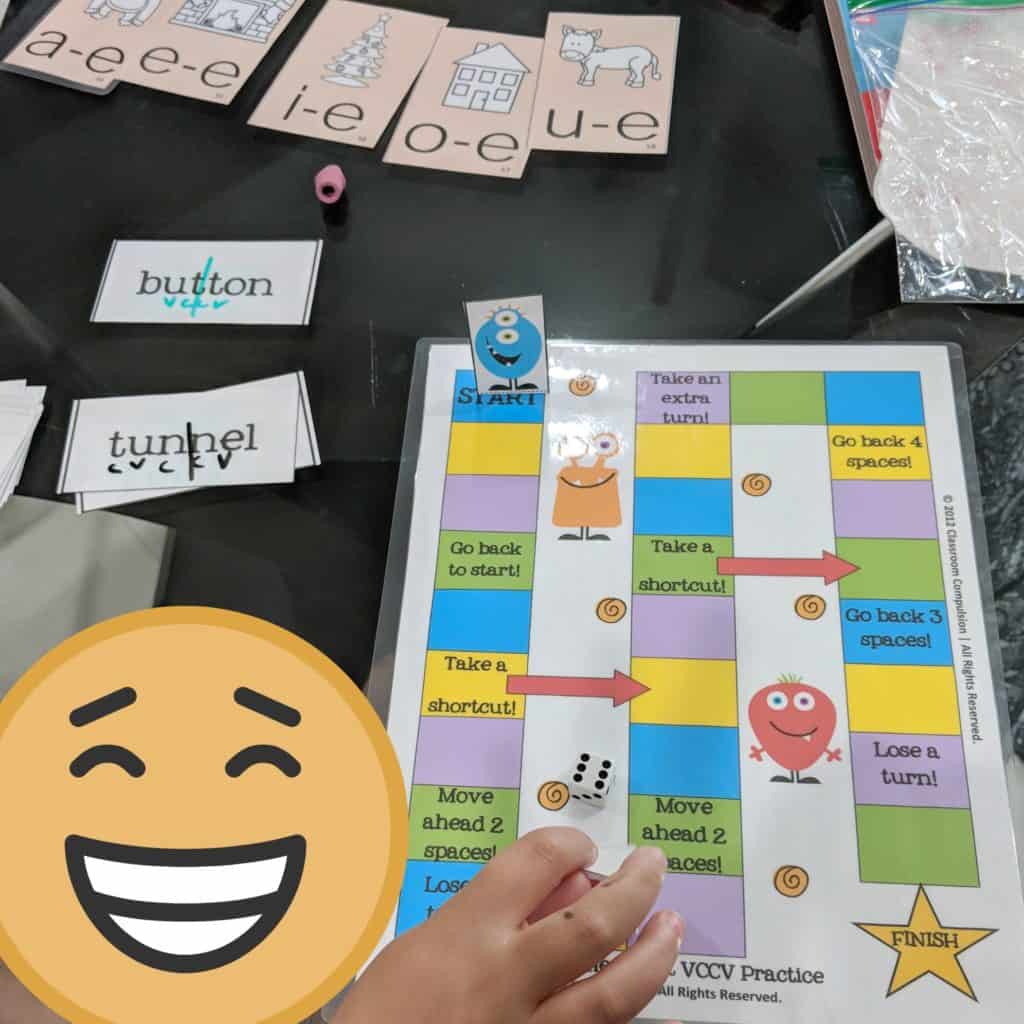
The 6 syllable types:
There are 6 syllable types and they are:
- Closed syllable
- Open syllable
- Vowel-consonant-e syllable
- Diphthong (vowel team) syllable
- R-controlled syllable
- Consonant-le syllable

Grab my free 6 Syllable Types anchor charts to use with your students by subscribing!
Closed syllable – vc
A closed syllable ends in a consonant. The vowel before the final consonant has a short sound. Examples include: cat, red, on, went.
This is the first type of syllable that is taught, usually in first grade. By this point, students are very familiar with closed syllable words such as CVC words.
Learn more about teaching the closed syllable here.
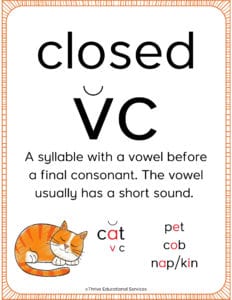
Open syllable – v
An open syllable ends with a vowel. The vowel has a long sound. Some examples are: go, me, I, a, cry.
The open syllable should be taught along with or after the closed syllable. Just as students are familiar with closed syllables in first grade, they are also familiar with many open syllable words like me and go.
Learn more about teaching open syllable here.

Vowel-consonant-e syllable – vce
Vowel-consonant-e syllables end in a final silent e with a consonant just before the silent e. This silent e makes the vowel before it have a long sound. Examples include: home, fine, cute.
This syllable type is called many things, such as silent e, magie e, sneaky e.
This syllable should be taught after students know short and long vowel sounds, and closed and open syllables. It’s a good transition to go from closed syllable to VCE by adding the silent e to CVC words.
Learn more about teaching the final silent e here.

R-controlled syllable – vr
R-controlled syllables always have at least one vowel followed by r. The r gives it a unique sound. Some examples are: her, bird, fur, ear, for.
This should be taught after open, closed, and VCE syllables. First and second grade are usually when this syllable is taught and practiced.
Learn more about teaching the r-controlled syllable here.

Diphthong (or vowel team) syllable – vv
A diphthong syllable usually has 2 adjacent vowels that are pronounced together. This produces a special sound; examples include: eight, grow, tail, fight.
Notice whether a vowel combination is reversed, such as io in lion., In this case you split the syllable between the i and o.
This syllable is also known as a vowel team. This is taught starting in first grade but there are some tricky ones that can be left for second grade.
Learn more about teaching the vowel team syllable here.
Consonant-le syllable – v-le
A consonant-le syllable has no vowel sound. The silent e at the end of the syllable is the only vowel. Only the consonant and the l are pronounced. Examples include: purple, table, maple.
This is the last syllable type to teach once the student has mastered the other 5, usually in second grade.
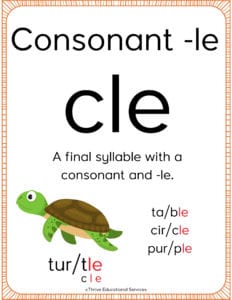
Learn more about teaching the consonant-le syllable here.
Syllable Division
Now that you know all the syllables, you should know how to split words into syllables.
There are a few rules to help break words into syllables. Head over to this guide on syllable division rules for more on syllabication.
Conclusion
Make sure to download my free 6 syllable types poster for your classroom from my freebies library. I like to print out the reference sheet with all 6 syllable types for my students and place it in a plastic sleeve for them to reference as needed.
Next, go read All About The Closed Syllable to start teaching this syllable and find activities and strategies.
Want to remember this? Save The 6 Types of Syllables to your favorite Pinterest board!




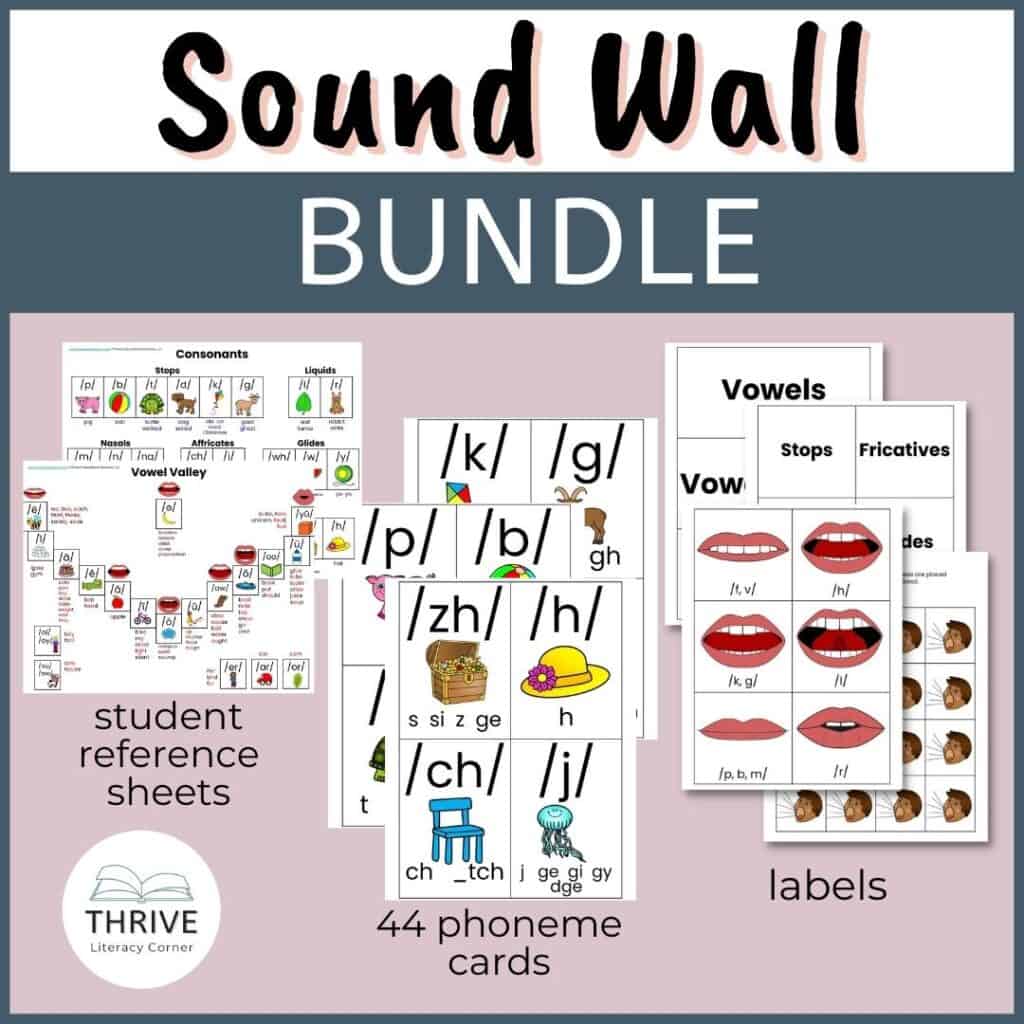
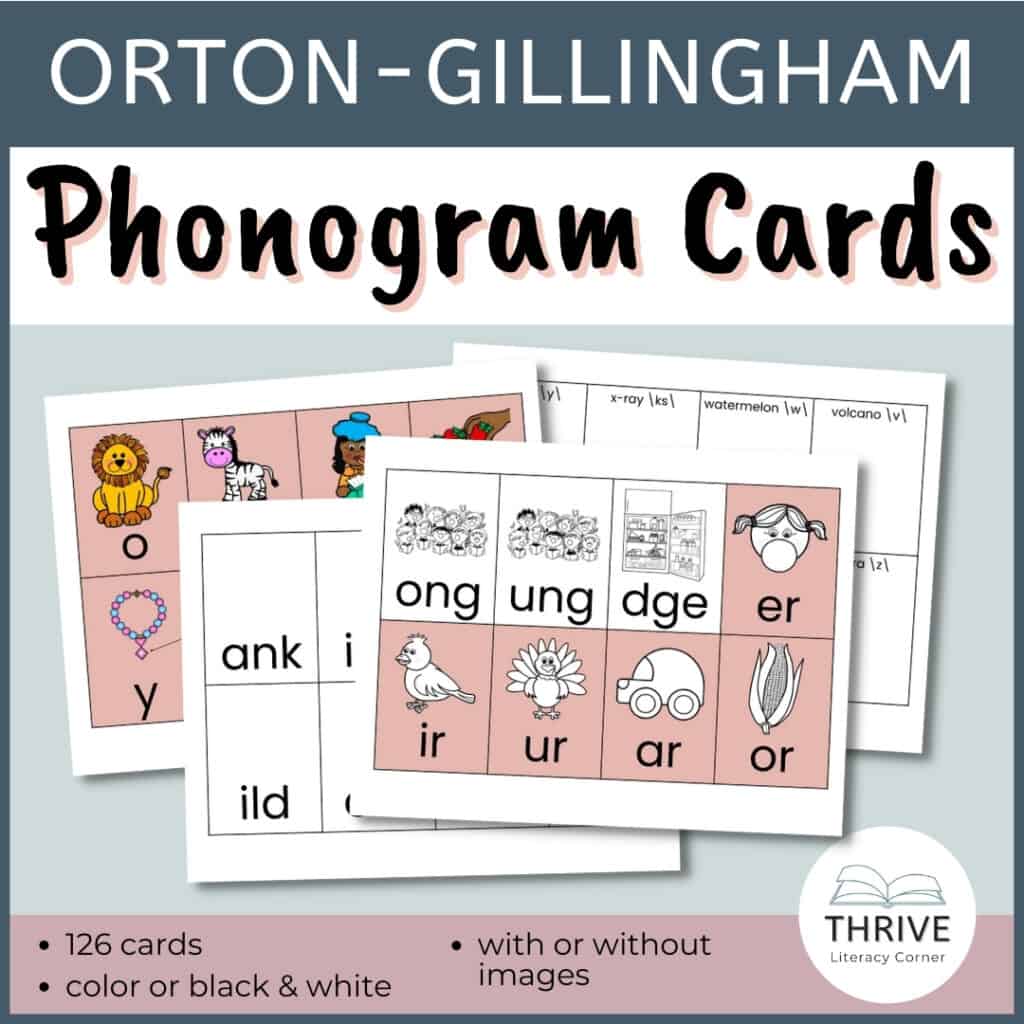
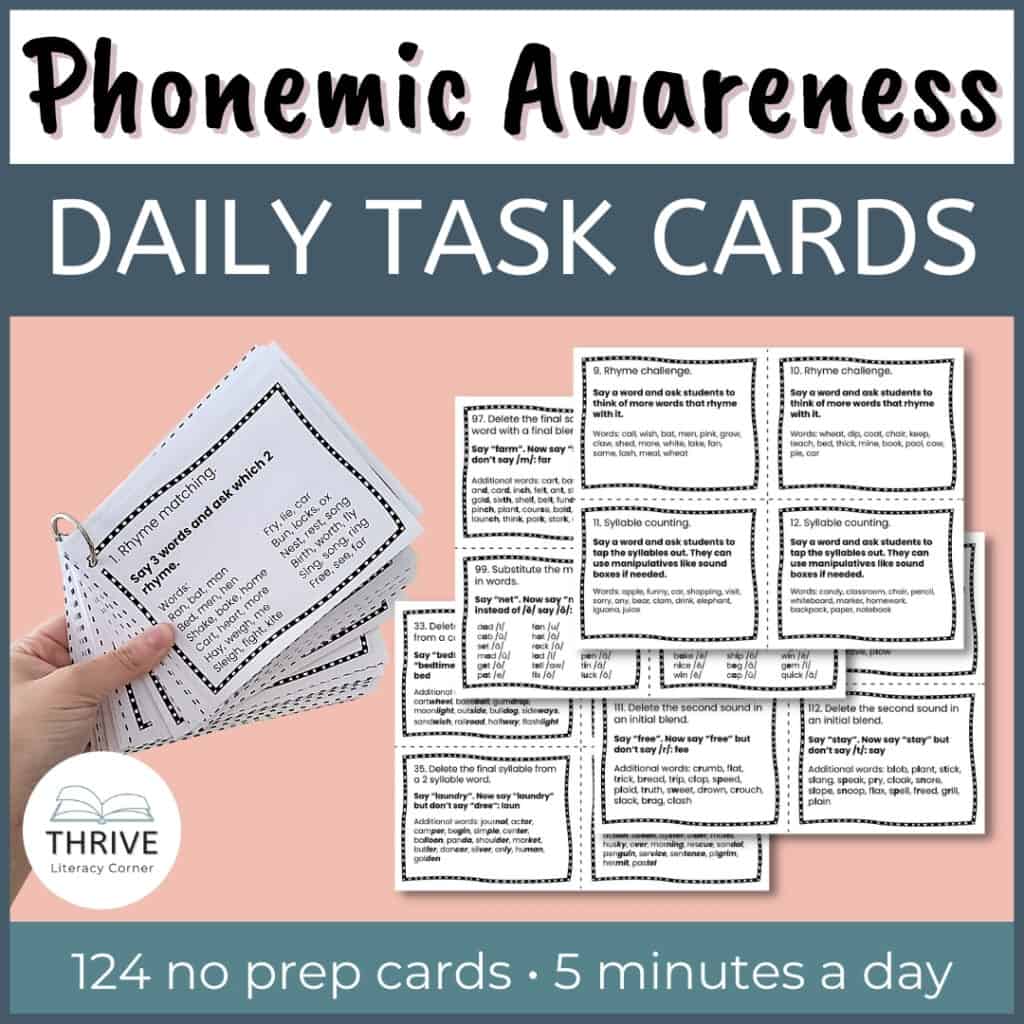


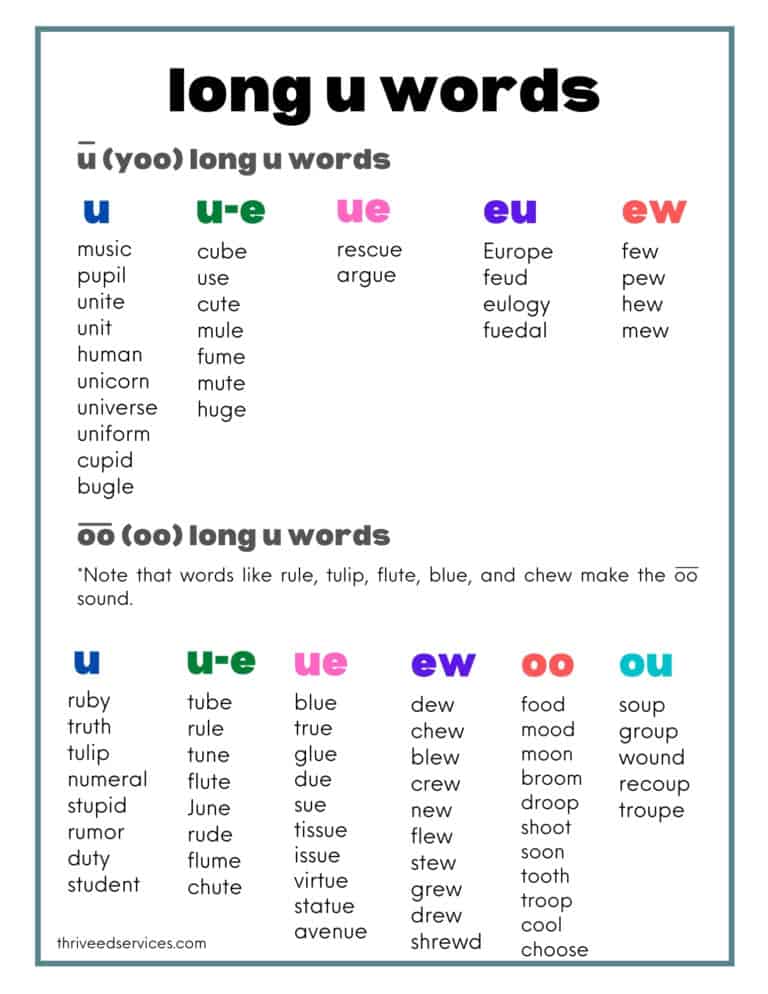
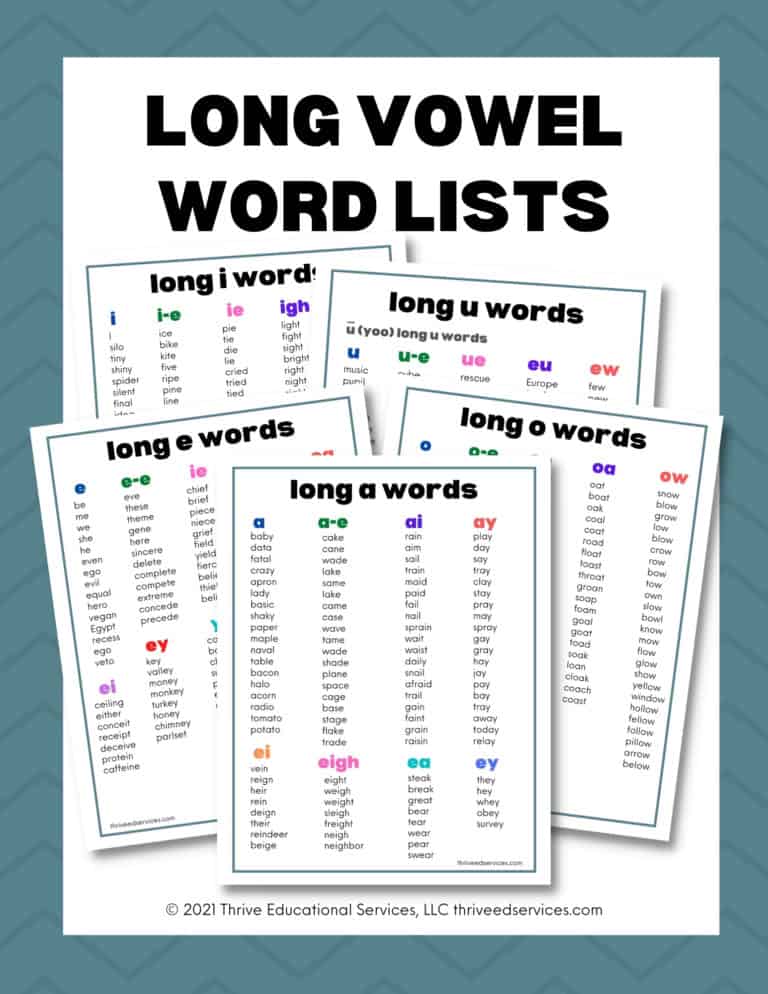
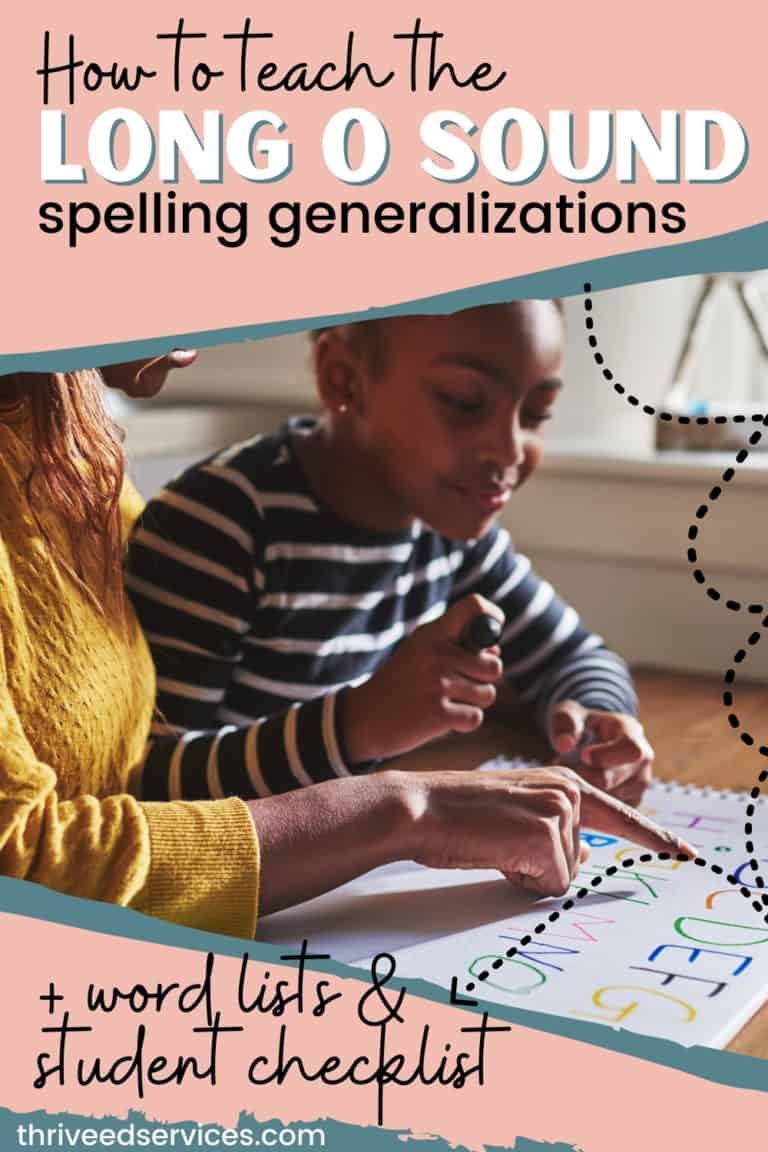
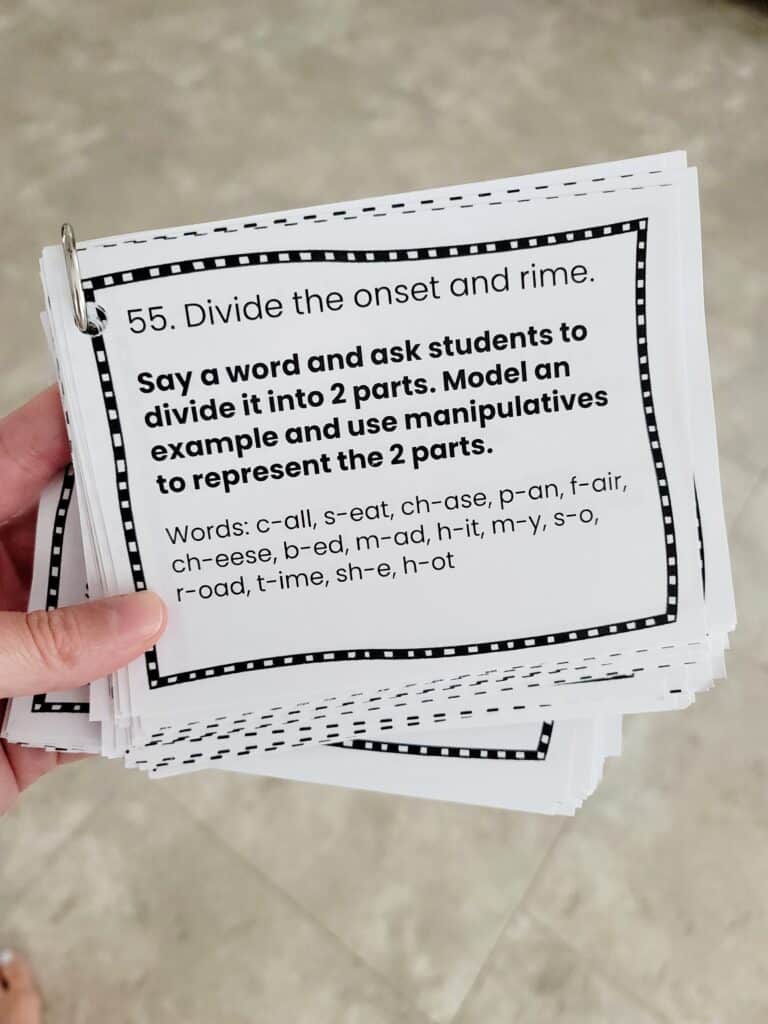
Thank you so much
Gratitude.
I would really like the free posters! If you are still sending these to people, thank you! I am a reading teacher in Michigan.
Hi Sarah. Yes, you can download them in my freebies library: https://thriveedservices.com/freebies/
Thanks for this amazing explanation I am a student of du sol and it will be very helpful to my exam keep it up 👍👍😘😘🥰🥰😊😊😊😘😘💞💞💞💞💞💗💗💗💗💗💗💗💗💗💗♥️♥️♥️♥️♥️❣️❣️❣️❣️❣️💕💕💕💕💕💕💕💕💕
“Hum the word and count the hums”, yes, sounds great. But, if counting syllables is for read the word, can I hum it when I can’t read it?
No, this only works to teach the skill of noticing syllables when students know the word. They will not be able to count syllables for words they don’t know.
Good day. This material is very helpful. Please, I want to know if the materials are downloadable. Thanks
Yes, I have a few free downloads in my freebies library. Find them in the menu.
Thank you for this post.
Enoch kipchumba student moi university the hand out has help me much thank so much iam now able to give examples of syllables by giving illustration